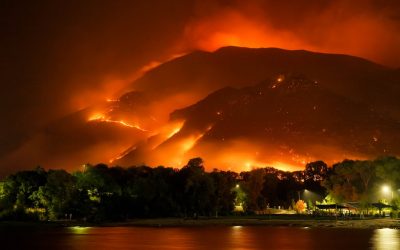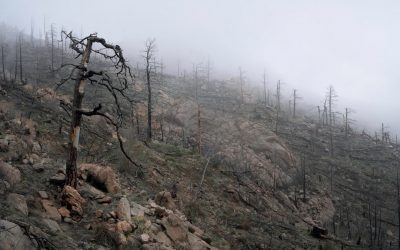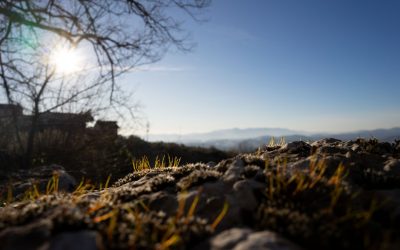Explore the World Through Geography, Natural Resources & Daily History
Clear, reliable and engaging guides that help you understand our planet — from UK geography education to global natural resources and On This Day history events.
Explore, discover, and learn about the wonders of our world! At Earth Site, we’re passionate about bringing geography, history, and science to life for curious minds of all ages. Whether you’re delving into historical events, uncovering the mysteries of the natural world, or seeking interactive resources, you’re in the right place.
Here, you can uncover the stories behind historical events, explore the natural wonders of our planet, and gain valuable insights into how the Earth’s systems shape our daily lives. From the towering peaks of mountain ranges to the far-reaching impacts of human innovation, we aim to make every topic both engaging and informative.
Start your journey of discovery with us today, and let’s make learning an adventure!
What We Cover
Earth Site brings together engaging and accessible educational content designed to help you understand the world, its history, and its natural systems.
🌍 Geography Education (UK & Worldwide)
We publish clear, easy-to-understand geography resources for students, teachers and curious learners. Our guides support geography education in the UK and cover physical geography, climate, ecosystems, population, and global development.
⛏️ Natural Resources & Environmental Geography
Explore detailed country profiles covering natural resources, mining, energy, geology and global environmental challenges. We show how nations manage minerals, water, land and ecosystems, and why these resources matter.
📅 On This Day in History
Every day has a story. Our On This Day history series features major events, anniversaries, traditions, and cultural milestones from around the world — with timelines, context, and fun facts.
TIMELINE
Connecticut
Connecticut, also known as the Constitution State, is a small state located in the northeastern United States. It is bordered by Massachusetts to the north, Rhode Island to the east, New York to the west, and Long Island Sound to the south. The state’s nickname, the Constitution State, comes from its early adoption of a written constitution in 1639, which is considered one of the first in the world. Connecticut has several state symbols that represent its unique identity. The state bird is the American robin, the state tree is the white oak, and the state flower is the mountain laurel. These symbols reflect Connecticut’s natural beauty and rich history. Summary Connecticut is known as the Constitution State, named after its role in drafting the US Constitution. Connecticut has a rich history dating back to colonial times, with significant contributions to the American Revolution and industrialization. The state’s geography and climate offer diverse landscapes, from coastal beaches to rolling hills and forests. Connecticut’s economy is driven by finance, insurance, and manufacturing industries, with major companies headquartered in the state. Connecticut boasts top-ranked universities and public schools, providing quality education opportunities for students. History of Connecticut: From Colonial Times to the Present Day Connecticut has a rich colonial history and played a significant role in the American Revolution. The state was originally inhabited by various Native American tribes before European settlers arrived in the early 17th century. In 1639, Connecticut adopted its first constitution, known as the Fundamental Orders, which established a democratic government and guaranteed certain rights to its citizens. During the American Revolution, Connecticut was a key player...
Colorado
Colorado, also known as the Centennial State, is a landlocked state located in the western United States. It is bordered by Wyoming to the north, Nebraska to the northeast, Kansas to the east, Oklahoma to the southeast, New Mexico to the south, Utah to the west, and Arizona to the southwest. Colorado is known for its stunning natural beauty, with its diverse landscape ranging from the majestic Rocky Mountains to the vast Great Plains. The state’s nickname, the Centennial State, was given in honor of Colorado becoming a state in 1876, one hundred years after the signing of the Declaration of Independence. Colorado has played a significant role in the history and development of the United States. The state was originally inhabited by Native American tribes such as the Ute, Arapaho, and Cheyenne. In the 19th century, Colorado experienced a gold rush which brought thousands of settlers to the region. The discovery of gold and other valuable minerals led to rapid growth and development in Colorado. Today, Colorado is known for its thriving economy, outdoor recreational opportunities, and vibrant cultural scene. Summary Colorado is known as the Centennial State, and is located in the western United States. The state’s geography ranges from the Rocky Mountains to the Great Plains, with a diverse climate to match. Colorado has a rich history, from Native American settlements to modern day industries like agriculture, mining, and tourism. Outdoor recreation is a major draw for visitors and residents alike, with skiing, hiking, and more available year-round. Colorado also offers cultural attractions like museums, galleries, and festivals, as well as a thriving food and drink...
California
California, also known as the Golden State, holds a special place in the hearts of many. With its diverse landscapes, vibrant culture, and thriving economy, California has become a symbol of opportunity and success. Spanning over 163,000 square miles and home to nearly 40 million people, California is the most populous state in the United States. Its nickname, the Golden State, is derived from the California Gold Rush of the mid-19th century, which brought thousands of people to the region in search of fortune. Summary California is known as The Golden State and is located on the west coast of the United States. The state has a diverse geography and climate, ranging from beaches to mountains and deserts to forests. California has a rich history and cultural heritage, with influences from Native American, Spanish, and Mexican cultures. The state’s economy is a global powerhouse, with industries such as entertainment, technology, and agriculture driving its success. Top tourist attractions in California include Disneyland, the Golden Gate Bridge, and Hollywood. Geography and Climate of California One of the most remarkable aspects of California is its diverse geography. From the towering peaks of the Sierra Nevada Mountains to the vast expanse of the Mojave Desert, California offers a wide range of landscapes for residents and visitors to explore. The state is also blessed with a stunning coastline that stretches over 800 miles along the Pacific Ocean. In addition to its diverse landscapes, California is known for its Mediterranean climate. The state experiences mild, wet winters and warm, dry summers. This unique climate has had a profound impact on California’s agriculture and natural...
Arkansas
Arkansas, also known as “The Natural State,” is a state located in the southern region of the United States. It is bordered by six states, including Missouri to the north, Tennessee and Mississippi to the east, Louisiana to the south, Texas to the southwest, and Oklahoma to the west. With a population of over three million people, Arkansas is known for its natural beauty, diverse landscape, and rich history. The nickname “The Natural State” is fitting for Arkansas due to its abundance of natural resources and scenic beauty. The state is home to numerous national parks, forests, rivers, and lakes, making it a haven for outdoor enthusiasts. From the majestic Ozark Mountains in the northwestern part of the state to the fertile Delta region in the east, Arkansas offers a wide range of natural wonders to explore. Summary Arkansas is known as “The Natural State” due to its diverse landscape and abundant natural resources. The state has a rich history dating back to Native American settlements and eventual statehood in 1836. Arkansas boasts a varied geography and climate, from the Ozark Mountains to the Mississippi Delta. The economy of Arkansas is driven by agriculture, manufacturing, and tourism. Arkansas has a vibrant culture with a strong emphasis on music, food, and festivals. History of Arkansas: From Native American Settlements to Statehood Arkansas has a long and complex history that dates back thousands of years. The area that is now Arkansas was originally inhabited by various Native American tribes, including the Quapaw, Osage, Caddo, and Cherokee. These tribes lived off the land and developed their own unique cultures and traditions. European...
Arizona
Arizona, also known as the Grand Canyon State, is a land of natural wonders and rich cultural heritage. Located in the southwestern region of the United States, Arizona is known for its diverse landscape, ranging from deserts to mountains. The state has a fascinating history and is home to numerous Native American tribes. One of the most famous attractions in Arizona is the Grand Canyon, a breathtaking natural wonder that attracts millions of visitors each year. Summary Arizona is known as the Grand Canyon State, home to one of the world’s most famous natural wonders. The state’s geography ranges from desert landscapes to mountain ranges, offering diverse outdoor activities. Arizona has a rich history and culture of Native American tribes, with many reservations still present today. The Wild West era is also a significant part of Arizona’s history, with cowboys, outlaws, and gunfights shaping the state’s identity. Arizona’s national parks, including the Grand Canyon, offer breathtaking views and opportunities for hiking, camping, and exploring the great outdoors. Geography of Arizona: From Desert to Mountains Arizona’s geography is incredibly diverse, offering a wide range of outdoor activities for nature enthusiasts. The state is known for its vast deserts, including the Sonoran Desert, which is home to unique plant and animal species. The desert landscape provides opportunities for activities such as hiking, off-roading, and exploring ancient Native American ruins. In addition to deserts, Arizona is also home to stunning mountain ranges such as the San Francisco Peaks and the Santa Catalina Mountains. These mountains offer opportunities for hiking, camping, and even skiing during the winter months. The state’s diverse geography makes...
Alaska
Alaska, the largest state in the United States, is often referred to as the Last Frontier. It is located in the extreme northwest of North America, separated from the rest of the country by Canada. Alaska has a rich history that dates back thousands of years, with indigenous people inhabiting the land long before European explorers arrived. The state was purchased from Russia by the United States in 1867 and became a territory before eventually gaining statehood in 1959. The nickname “The Last Frontier” is fitting for Alaska due to its vast and untamed wilderness. With its rugged mountains, expansive forests, and icy glaciers, Alaska offers a sense of adventure and exploration that is unparalleled. The state is known for its remote and isolated communities, where residents must rely on their resourcefulness and resilience to survive in such a harsh and unforgiving environment. Alaska truly represents the last frontier of America, a place where nature still reigns supreme. Summary Alaska is the last frontier of America, known for its unique geography, climate, and rich cultural heritage. Alaska is home to a thriving wildlife, including polar bears, whales, and more. Alaska’s natural resources, such as oil, gas, and fisheries, play a significant role in the state’s economy. The Northern Lights and the Iditarod sled dog race are iconic attractions in Alaska. Despite its beauty, living in Alaska can be challenging due to harsh winters and isolation. Alaska’s Unique Geography and Climate Alaska’s geography is incredibly diverse and breathtakingly beautiful. The state is home to towering mountain ranges, including the famous Denali (formerly known as Mount McKinley), which is the highest...
Alabama
Alabama, located in the southeastern region of the United States, is a state with a rich history and vibrant culture. It is known for its southern hospitality, diverse landscapes, and significant contributions to American history. From the Civil Rights Movement to its musical heritage, Alabama has played a pivotal role in shaping the nation. Alabama became the 22nd state to join the United States in 1819. It was named after the Alabama River, which runs through the state. The state has a population of approximately 5 million people and is home to several notable figures and events in American history. Rosa Parks, a civil rights activist, famously refused to give up her seat on a bus in Montgomery, Alabama, sparking the Montgomery Bus Boycott and becoming a symbol of the Civil Rights Movement. The state is also known for its connection to the space program, as Huntsville is home to NASA’s Marshall Space Flight Center. Summary Alabama is a southern state with a rich history and culture. Alabama’s geography ranges from mountains to beaches, offering diverse landscapes. The people of Alabama are known for their unique traditions and diverse communities. Alabama’s economy is driven by agriculture, industry, and tourism. Alabama is home to famous landmarks and attractions, including civil rights monuments and natural wonders. Alabama’s Geography: From Mountains to Beaches and Everything in Between Alabama boasts a diverse landscape that includes mountains, forests, rivers, and beaches. The northern part of the state is characterized by the Appalachian Mountains, which offer stunning views and opportunities for outdoor activities such as hiking and camping. The central region of Alabama is known...
The Fascinating World of Actinides: From Actinium (Ac) to Lawrencium (Lr)
Actinides are a series of chemical elements that belong to the actinide series in the periodic table. They are characterized by their atomic numbers ranging from 89 to 103, and they are all radioactive. The actinides are named after the first element in the series, actinium. Actinides play a crucial role in various fields, including nuclear energy and medicine. In nuclear energy, actinides such as uranium and plutonium are used as fuel in nuclear reactors to generate electricity. These elements have the ability to undergo nuclear fission, releasing a large amount of energy in the process. Actinides also have important applications in medicine, particularly in cancer treatment. Radioactive isotopes of actinides can be used for targeted radiation therapy to destroy cancer cells. Summary Actinides are a group of elements with atomic numbers 89 to 103 that have unique properties and applications. Actinium was discovered in 1899 by André-Louis Debierne and was named after the Greek word for “ray” due to its radioactivity. Uranium is the most well-known actinide and is used for nuclear power and weapons. Plutonium is infamous for its use in nuclear weapons and its toxicity, but also has applications in nuclear power and space exploration. Neptunium was the first transuranic element discovered and has applications in nuclear reactors and weapons. The Discovery of Actinium: A Brief History Actinium was discovered by André-Louis Debierne, a French chemist, in 1899. He isolated the element from uranium ore and named it “actinium” after the Greek word “aktis,” meaning beam or ray, due to its radioactive properties. However, it was Friedrich Oskar Giesel, a German chemist, who officially named the...
Uncovering the Mysteries of Radium: The British Connection
Radium, a highly radioactive element, was discovered in the late 19th century and quickly became a subject of intense scientific interest. Its discovery and subsequent research had a profound impact on various fields, including medicine, industry, and nuclear science. British scientists played a significant role in the study of radium, making important contributions to its understanding and application. This article will explore the British contributions to radium research, highlighting the discoveries made by British scientists, the unique properties of radium, the role of British women in radium research, its use in medicine, the rise and fall of the British radium industry, the ethical considerations surrounding radium research, its portrayal in British literature and film, its impact on nuclear science, the health hazards faced by British workers, and current efforts to safeguard public health. Summary A British scientist, Ernest Rutherford, played a key role in the discovery of radium. Radium has fascinating properties, including its ability to emit light and heat. British women made significant contributions to radium research, despite facing discrimination and limited opportunities. The British medical community initially embraced radium as a cure-all, but later recognized its dangers. The British radium industry boomed in the early 20th century, but declined due to safety concerns and competition from other countries. The Discovery of Radium: A British Scientist’s Contribution The discovery of radium can be attributed to the work of several scientists, including British scientist Sir William Crookes. Crookes conducted experiments with uranium and pitchblende, a mineral that contains uranium. He noticed that pitchblende emitted more radiation than could be accounted for by uranium alone. This led him to hypothesize...
The Elusive Element: Unraveling the Mysteries of Francium (Fr)
Francium is a highly rare and elusive element that holds great significance in the field of chemistry. It is the second rarest naturally occurring element on Earth, with only a few grams estimated to exist at any given time. Due to its scarcity, studying Francium has proven to be a challenging task for scientists. However, the importance of understanding this element cannot be overstated, as it provides valuable insights into the fundamental properties of matter and has potential applications in various fields. Summary Francium is the rarest element on Earth, with only a few grams estimated to exist at any given time. The discovery of Francium was a long and difficult process, involving several scientists and years of experimentation. Francium’s chemical properties are still not fully understood, but it is known to be highly reactive and unstable. Francium’s physical properties include a low melting point and a tendency to evaporate quickly. The atomic structure of Francium is complex and difficult to study, but recent advancements in technology have allowed for more detailed analysis. The Discovery of Francium: A Brief History The discovery of Francium can be traced back to the early 20th century when scientists were exploring the properties of radioactive elements. Several attempts were made to isolate this elusive element, but it wasn’t until 1939 that Marguerite Perey, a French physicist, successfully identified and isolated Francium. Perey was working as a research assistant in Marie Curie’s laboratory when she made this groundbreaking discovery. Marie Curie and her team played a significant role in the discovery of Francium. They were pioneers in the field of radioactivity and had previously...
Radon: The Silent Killer Lurking in British Homes
Radon gas is a naturally occurring radioactive gas that is formed from the decay of uranium in soil, rock, and water. It is odorless, colorless, and tasteless, making it impossible to detect without specialized equipment. Radon exposure has been linked to various health issues, with lung cancer being the most significant concern. In fact, radon is the second leading cause of lung cancer after smoking, responsible for around 21,000 deaths each year in the UK. When radon gas is inhaled, it can damage the cells lining the lungs. Over time, this damage can lead to the development of lung cancer. The risk of developing lung cancer from radon exposure depends on several factors, including the concentration of radon in the air, the duration of exposure, and whether or not an individual smokes. Smokers who are also exposed to high levels of radon have a significantly higher risk of developing lung cancer compared to non-smokers. In addition to lung cancer, radon exposure has also been linked to other respiratory issues such as chronic obstructive pulmonary disease (COPD) and respiratory infections. There is also some evidence suggesting a possible link between radon exposure and other health conditions such as heart disease. Therefore, it is crucial to understand the sources of radon in British homes and take steps to mitigate its presence. Summary Radon is a radioactive gas that can cause serious health problems, including lung cancer. Radon is found in many British homes, and can come from sources such as soil and building materials. Around 1 in 15 homes in the UK have high levels of radon, with some areas being...
The Mysterious Element: Exploring the Properties and Uses of Astatine (At)
Astatine is a chemical element with the symbol At and atomic number 85. It is one of the rarest elements on Earth, with only trace amounts found in nature. Astatine is a highly radioactive element and is classified as a halogen, along with fluorine, chlorine, bromine, iodine, and tennessine. Due to its rarity and radioactivity, studying astatine presents numerous challenges. However, its unique properties make it an intriguing element to explore. The scarcity of astatine on Earth is due to its short half-life and the fact that it is continuously produced through the decay of other elements. It is estimated that there is less than one gram of astatine present in the Earth’s crust at any given time. This rarity makes astatine difficult to obtain and study in large quantities. Despite its scarcity, astatine has significant importance in scientific research and potential applications in various fields. Summary Astatine is the rarest element on Earth, with only a few grams estimated to exist at any given time. Astatine was discovered in 1940 and is highly radioactive, making it difficult to study and handle. Astatine has potential applications in cancer treatment through nuclear medicine. Astatine’s use in scientific research helps to understand the behaviour of halogens. Challenges in astatine research include the handling and storage of radioactive materials. A Brief History of Astatine Discovery and Isolation Astatine was first discovered in 1940 by Dale R. Corson, Kenneth Ross MacKenzie, and Emilio Segrè at the University of California, Berkeley. They bombarded bismuth-209 with alpha particles to produce astatine-211. The element was named after the Greek word “astatos,” meaning unstable or unsteady, due...











